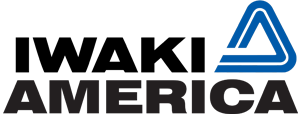Safety Instructions and Preventive Maintenance Guide
Pumps play a significant role in a variety of industries and applications, ensuring the smooth movement of liquids and gases. However, in order to maintain top performance and safety, it is essential to adhere to routine maintenance procedures and safety recommendations. This guide aims at providing the detailed information about pump safety and preventive maintenance.
Safety Instructions
Read the Manual: Before using Iwaki America pumps, read and understand the handbook thoroughly. Make sure you understand the pump’s specifications, capabilities, and safety precautions.
Personal Protective Equipment (PPE): Wear suitable PPE, such as safety goggles, gloves, and protective gear, to avoid injury from splashes, spills, or contact with moving parts.
Proper Installation: Ensure the pump is put appropriately according to the guidelines. Improper installation can cause operating inefficiencies and safety issues.
Ventilation: Operate pumps in well-ventilated areas to prevent the buildup of potentially harmful gases or vapors. If working in confined spaces, use proper ventilation equipment.
Emergency Shutdown Procedures: Familiarize yourself with emergency shutdown procedures in case of malfunction, leakage, or any other hazardous situation. Ensure all personnel know how to operate emergency shutdown mechanisms.
Regular Inspections: Conduct routine inspections of the pump and its components for signs of wear, damage, or leaks. Address any issues promptly to prevent accidents or system failures.
Lockout/Tagout: Before performing maintenance or repair work on pumps, follow lockout/tagout procedures to isolate energy sources and prevent accidental startup. Only trained personnel should perform maintenance tasks.
Avoid Overloading: Operate the pump within its rated capacity to prevent overloading, which can lead to overheating, damage, or catastrophic failure. Refer to the manufacturer’s specifications for maximum operating limits.
Training and Education: Ensure all personnel operating or maintaining pumps receive adequate training and education on safe practices, emergency procedures, and the proper use of equipment.
Chemical Compatibility: If handling hazardous chemicals, ensure the pump materials are compatible with the fluid being pumped or refer our chemical compatibility chart for more information. Incompatible materials can lead to corrosion, leaks, or chemical reactions.
Preventive Maintenance Guide
Regular Lubrication: Keep bearings, seals, and other moving parts properly lubricated. Insufficient lubrication can lead to premature wear and breakdowns.
Cleanliness: Maintain a clean environment around the pump to prevent the ingress of debris, dirt, or contaminants. Regularly clean the pump and its surrounding area to ensure optimal performance and longevity.
Inspect Seals and Gaskets: Check seals and gaskets for wear, damage, or leaks regularly. Replace any worn or damaged seals to prevent fluid leakage and maintain pump efficiency.
Monitor Vibration and Noise: Pay attention to unusual vibration or noise coming from the pump during operation. Excessive vibration or noise can indicate misalignment, imbalance, or other mechanical issues that require attention.
Temperature Monitoring: Monitor the operating temperature of the pump and its components. Overheating can indicate problems with lubrication, cooling, or system overload. Address any temperature abnormalities promptly.
Keep Impellers Clean: Inspect and clean impellers regularly to remove any buildup of debris, scale, or sediment. A clean impeller ensures optimal fluid flow and prevents clogging or reduced efficiency.
Check Motor Alignment: Ensure the pump motor is properly aligned with the pump shaft to prevent excessive wear on bearings and seals. Misalignment can lead to premature failure and costly repairs.
Replace Worn Parts: Keep an inventory of spare parts and replace worn or damaged components as needed. Regularly check wear parts such as impellers, seals, and bearings for signs of deterioration.
Schedule Maintenance: Develop a preventive maintenance schedule based on manufacturer recommendations and operating conditions. Regular maintenance helps prevent unexpected breakdowns and extends the life of the pump.
Document Maintenance Records: Keep detailed records of all maintenance activities, including inspections, repairs, and replacements. This information helps track the pump’s performance over time and identify any recurring issues.
By following these safety instructions and preventive maintenance practices, you can ensure the safe operation and longevity of your pumps while minimizing the risk of accidents or downtime. Remember, prioritizing safety and proactive maintenance is key to maximizing pump efficiency and reliability.





Videos